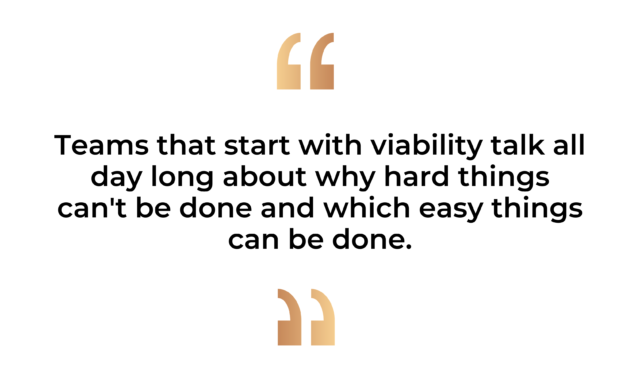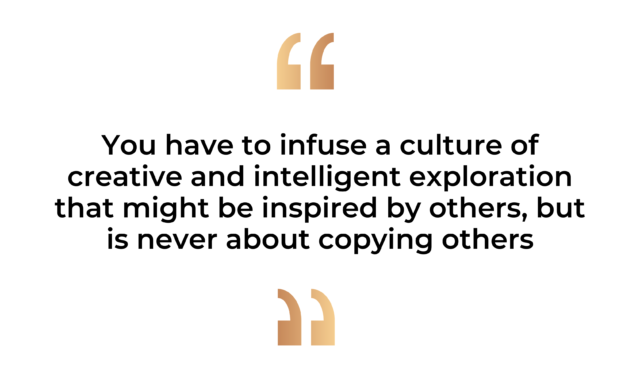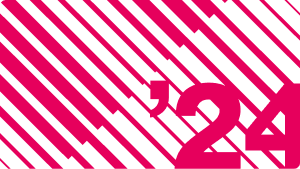Why Culture and Cognition Matter to Enterprise Product Teams

If you’re an enterprise product leader, you are no stranger to adversity. You likely know what it takes to be on the front lines of digital transformation. You understand grit and empathy and have learned to develop multi-faceted relationships with consumers and stakeholders. You listen to and defend customers with your life, monitor threats from external competitors and confront budgetary pressures from internal management. All this as the velocity of features and releases accelerates and aging platforms falter through upgrades right beneath you.
One of the hardest things to do as a product leader, enterprise or not, is setting up and managing your product teams. What is the optimal team structure? How should teams operate? And why do they sometimes fail to deliver?
I wanted to address these questions with an expert, so I reached out to Evan LaPointe. Evan’s background ranges from entrepreneur and product visionary for tech startups to advisor for large brands. Now as founder and CEO of a company focused on leveraging psychology-based principles to improve organizational performance, you’ll learn that Evan is especially passionate about the importance of culture and chemistry to the success of teams.
I asked Evan questions about organizing product teams, including defining team structure, team size, process and what it takes to transform teams into well-oiled continuous improvement machines. What I learned is that in many cases I was asking the wrong questions. How to organize teams matters far less than cognition. Mindset matters more than structure. I hope you enjoy this Q&A and welcome your input.
Evan LaPointe Bio (in his own words):
Evan is a 5-time entrepreneur in the digital space. He has built product companies (including Satellite, now Adobe DTM and Launch) from the ground up, helped Adobe and Google create some of the most successful products in our industry, and has helped over 300 brands with their omnichannel experiences, products, marketing strategies, customer success programs, and analytics. Currently, Evan is founder/CEO of CORE Sciences, offering predictive analytics tools and services that help complex organizations understand how to optimize the culture and teams that sit underneath all operations, making everything a company does easier, faster, and smarter.
Q&A with Evan:
1. As large consumer brands strive to be more customer-centric, many are organizing their product teams around the customer journey vs. being tied to the technology stack. But if underlying the technology platforms (such as native app and web) are inherently different, how can this be accomplished?
Product minds should always be thinking about the experiences they are trying to make and then exploring the viability of those effective, elegant, and delightful experiences. When teams get flipped around and technically-obsessed, they get this all backwards and get stuck talking about viability when the market demands much more ambitious work and intelligent conversation.
I tell product teams to fall in love with what they want to build first, then go through the rigor of making it. If you fall in love with the vision, it’ll give your teams the resilience to tackle the inevitable challenges and obstacles that come with building. But teams that start with viability do the opposite: they talk all day long about why hard things can’t be done and which easy things can be done.
Can you imagine how it would have felt to build the railway to the west if the teams had started with viability rather than vision? They’d have quit the second they saw the Rockies.
It doesn’t matter how a team is physically organized. It matters how a team thinks and behaves. When you decide on the inspiring, passionate, and determined culture that will create vision and then blow obstacles up with dynamite, it’ll become a bit more obvious how to structure your team and how little it actually matters. Team structure does not unlock culture and outcomes like some sort of magic spell. Culture is what unlocks and diminishes the importance of structure.

2. What is the ideal makeup of an enterprise consumer-focused digital product team? What roles and functions exist and what’s the ideal size?
The ideal size for an enterprise product team is 1. The next most ideal size is 2. And so on. Of course, this is impossible most places. But what we have in most places is massive bloat in both team size, team structure, and the metawork of product management.
Most enterprise product teams remind me of that kid in A Christmas Story that was wrapped up in so many layers of clothing and scarves and hats that he could barely move. These layers in our product organizations start to form when we’re trying to protect ourselves from any and every gap in managing the processes inherent in product, particularly around delivery and ensuring that everything is staying on track. But the unintended consequence of all of these layers and roles is that most organizations, like that poor kid, can barely move or breathe.
Team size and complexity leads to exponentially-more bandwidth dedicated to simply staying in sync with each other. Large teams with myopic, micro roles and responsibilities also often break their goals and incentives down too far, leading colleagues to compete with each other rather than cooperating and coordinating logical tradeoffs.
Counterintuitively, a smaller team can move much, much faster than a larger team, because while they don’t start as many simultaneous projects as the larger team, they parse, coordinate, and complete projects in weeks that take larger teams quarters or even years to make meaningful progress on, and that’s only if they successfully battle over consensus and alignment. Small teams often also build much more cohesive and less fractured technical architectures, meaning all work in the future is easier than working on top of the patchwork of a technical architecture that looks like it was made by 20 different teams all working separately.
At one person, you have an ambassador who brings the outside world’s voice in and tastefully guides design and development teams work together to make elegant products and experiences that live up to high standards. Every role you add beyond that must be due to a material breaking point in one person’s capacity to deliver that. If you are adding team members to make sure that work gets done or that productivity reporting can happen or so you can figure out timelines and deadlines, recognize that those are all metawork that do absolutely nothing for your business or product other than increasing transparency. The better the product team and the healthier the surrounding organization, the less transparency they will need to trust that great work is being done, and that allows teams to work on the product itself, not feeding the swarming bureaucracy monster around the product.
3. When looking at the full product lifecycle (discover, define, develop, deliver), what process, methodologies and frameworks are most effective and why?
Product is very simple if you model it after exploration. First, you’re going to need a map of your world and industry and customer base. Making maps is called cartography, and your product, marketing, sales, and customer success teams need to be world class cartographers. Second, you’re going to need a plan to traverse your world.
Most product teams start making plans without maps. They pull out a clean sheet of paper and talk about their mission and strategies. And then to make things worse, they borrow mantras like “fail faster” as an excuse for impulsive behavior and refusal to map out the environment ahead of time.
I call it “Roomba management” when teams do this. Like the little robot vacuum, many product teams insist in bumping into everything in a room just to discover what the room looks like. They stubbornly refuse to use their other senses. Only “touch” will do for these Roomba teams. If they haven’t personally bumped up against something themselves, they can’t believe it is real. But smart product teams invoke more senses to map their environment. Namely, they use compassion and curiosity, both strategically and tactically.
First, a business that conducts Operationalized Compassion will run circles around a company that simply does discovery, especially in the traditional sense of proving business cases using industry research, TAM analysis, and looking at the world through the lens of a spreadsheet.
Second, Operationalized Curiosity comes after you use compassion to determine where to start drawing a map. Curiosity is what fuels detail, nuance, and resolution. Curiosity helps you understand segments, it helps you get stay connected to the market rather than filled with hubris, and it ensures that you avoid oversimplifying things and missing the mark.
Finally, Operationalized Creativity is how you draw your strategies on top of the map. Your right brain is what creates great products, not your left brain. Every effort to systematize creativity into process works, but it creates mediocrity 100% of the time. Creativity is what drives elegant and delightful experiences that outperform pragmatic mediocrity in a big way.
Once you have your plan and need to execute, true agile (not some BS flavor designed for maximum transparency) is great because it’s clear on priorities, sequence, complexity, and speed. As hard as it sounds, you have to discipline yourself and the rest of the organization to make product like you make Thanksgiving turkey. It’s done when it’s done. You don’t get a Minimum Viable Turkey halfway through cooking.
4. In today’s digital landscape, how do you achieve the fail forward mindset that’s required? How do you build and cultivate a culture of Continuous Product Design, focusing on rapid iteration, test and learn? What skill sets, approach and tools do you need?
When you attempt to mine the market for money, you get all sorts of false positives and false negatives: you are constantly doing worse than you think you are or better than you think you are when your eyes are down looking at spreadsheets rather than up looking at the world.
Too many teams are caught up in best practices and the “right” way of doing things, and they’ve completely forgotten that their brain has a right hemisphere: the part that allows for creativity and innovation. Best practices are always the old way. It’s always copying. You have to infuse a culture of creative and intelligent exploration that might be inspired by others, but is never about copying others without infusing your own brand of creativity in everything you do.
Hire people who are naturally creative and maybe take a break from all of the ridiculous design thinking courses that attempt to teach cats to bark. The courses are absolutely a net positive for any team, but you are not going to rearrange the DNA and synaptic pathways of your team in a day full of stick it notes. All these courses do is install a decent process and few forcing functions that help teams resist their innate desire for pragmatism. They don’t change pragmatists, they just put airbags around your organization so the pragmatism doesn’t cause as many injuries. That slows you down and is mediocre, at best. Get people who are deeply creative and have been their whole life.

5. What would you suggest to digital leaders looking to restructure their product teams around the customer journey and continuous improvement? How should they manage change, skill gaps and potential conflict?
Businesses futilely try to patch the gaps with training, feedback, tooling, process, and incentives, but all that does is prolong the process of discovering we got the fit wrong. People who lack natural compassion, curiosity, or creativity will be abysmal product people. They will turn the whole thing into process that chokes value and creates mediocrity. You don’t have to have all three, but you do have to have the first two. A compassionate and curious person can work with a creative person (a designer) very effectively, but all three is ideal.
If you don’t know the psychological composition of your team, you are at a huge disadvantage in eliminating skill gaps, managing change, and dealing with conflict, because these gaps will always be re-opening and closing them will create thrash as you go against the grain of people’s internal compasses. The ideal team, particularly in product, will navigate these challenges with such aplomb that that they will set the bar for the rest of the organization and quickly become an outlier in any business. And believe me, product needs to be an outlier in your business if you want the rest of your operations in marketing, sales, customer success, CX, analytics, etc. to be fun rather than torture.
6. Do you have any other ideas or suggestions for how to optimize product teams and culture?
I have hundreds of other ideas and suggestions. There’s nothing I love more than working with product teams to create health from the inside out. But I’ll leave everyone with this: check your maps before you embark on your strategies. If you’re building strategies without great maps and over-biasing toward a guess-and-check culture, you’ll definitely make progress but you will never perform near your potential. When you realize the maps aren’t great and put the team to the task, the team will either love or hate cartography. If they hate it, you have the wrong team. Period. Fix that and you won’t believe how quickly your culture, your execution, and your results will change.
This Q&A was conducted by our guest contributor Tom Arundel, Director of Digital Product Performance at Marriott.







